Have you ever thought of what separates outstanding organisations from the rest? As the business landscape undergoes rapid change, organisations striving for success tend to recognise the effect of performance management strategies.
Michael Armstrong, author of the “Handbook of Performance Management,” quotes the performance management cycle:
“Performance management is the continuous process of improving performance by setting individual and team goals which are aligned to the strategic goals of the organisation, planning performance to achieve the goals, reviewing and assessing progress, and developing the knowledge, skills and abilities of people.”
What is Performance Management?
Imagine a workplace where everyone feels supported and empowered - here lies the performance management.

Performance management isn’t just about managing or evaluating. It’s about creating a road for continued learning, growth, alignment and collective success. But what does effective performance management mean? Yes, it goes beyond individual reviews. It involves opening communication channels and identifying strengths and areas for employee development. It leads to the roadmap for success, enabling organisations to stay ahead of the curve.
This communication-based process which allows managers and employees to plan, monitor and work together, contributes to the overall growth of the company. The process involves measuring, reporting and progress at the organisation level.
The statistics taken by SelectSoftwareReviews reveal the challenges and opportunities associated with performance management in today’s workplace.
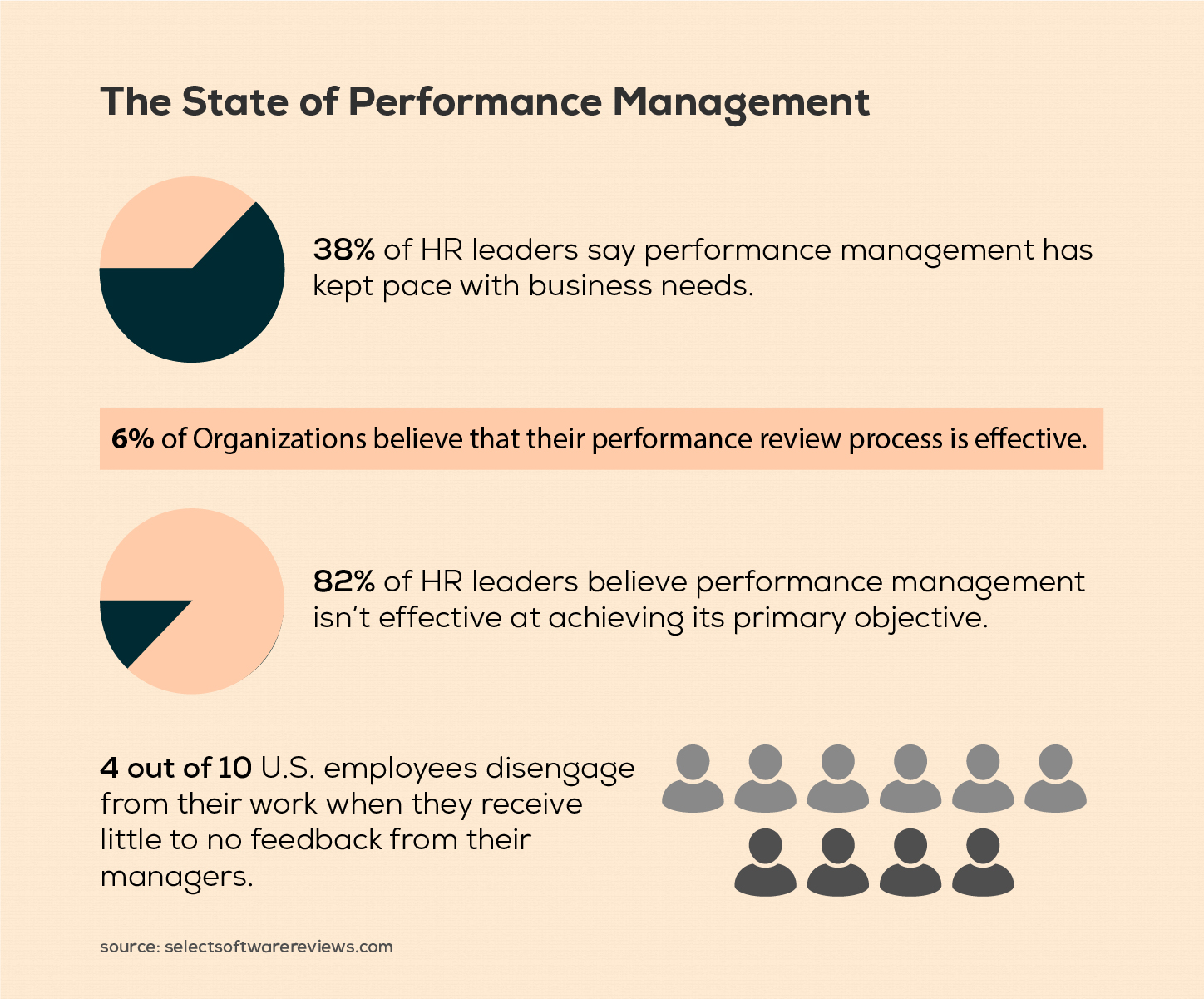
Process of Performance Management
Building strong performance management requires various components, each requiring fine-tuning that leads to a journey towards success. Here is the performance management process:
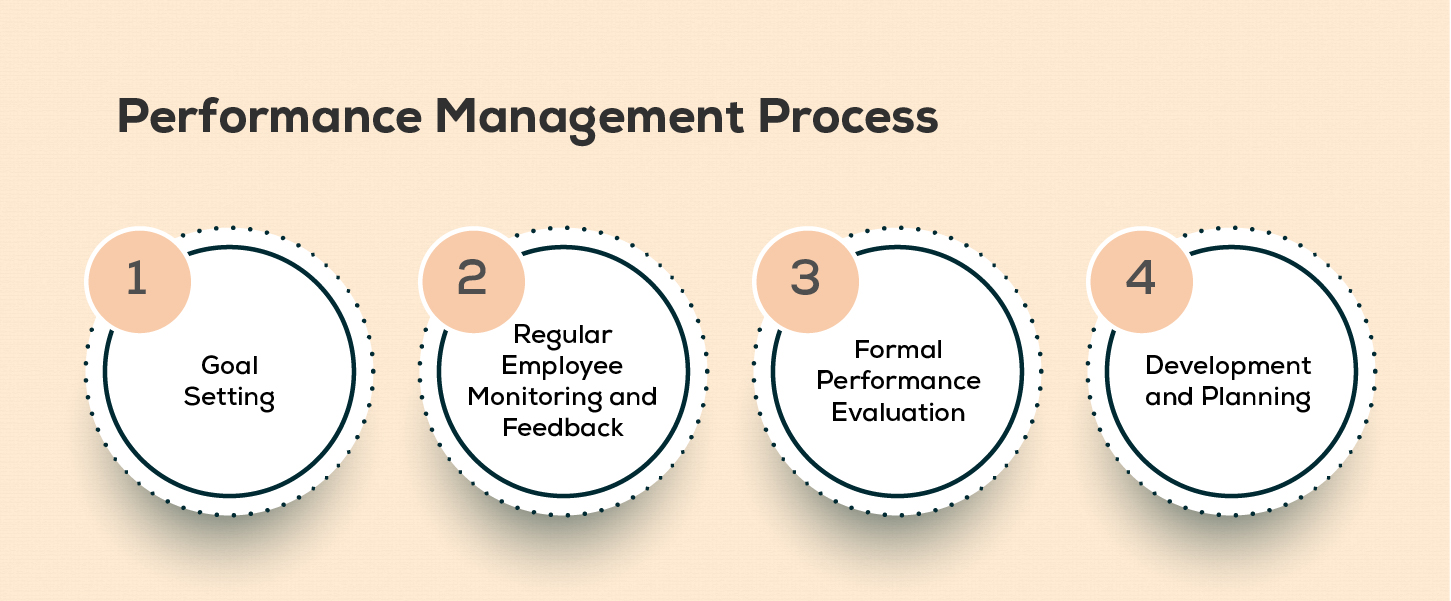
1. Goal Setting
Setting a clear and measurable goal is the primary step in the performance management process. Regular review of the goals with strategies is the top priority. Through the goal-setting process, employees work on developing their skills and personal development.
2. Regular Employee Monitoring and Feedback
For the organisation's success, effective communication between managers and employees is necessary. Constant feedback is the top priority to help employees identify the areas of improvement. Incorporating a self-assessment component into a performance management system is a common practice, as it allows employees the opportunity to reflect on areas of growth.
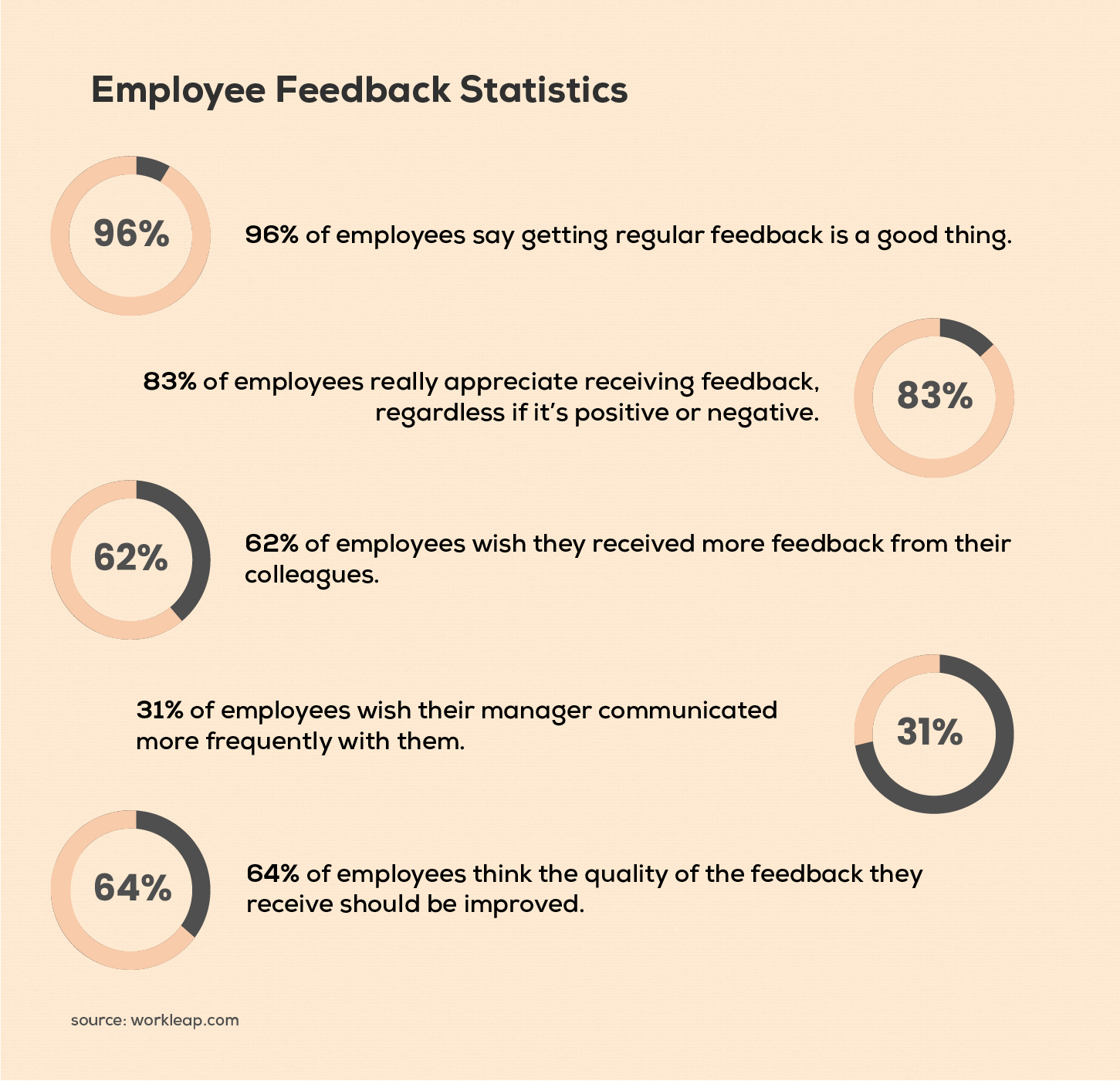
3. Formal Performance Evaluation
Generally, organizations conduct annual or semi-annual performance evaluations as part of their performance management process. These evaluations typically involve discussions between managers and employees regarding strengths, areas of improvement, and challenges faced. Additionally, collaborative evaluations with peers are often incorporated to align individual performance with organizational goals. These discussions serve as crucial opportunities for feedback, goal setting, and professional development planning.
4. Development and Planning
During the development and planning stage, managers play a critical role in conducting assessments where employees can enhance their skills. Plans of performance improvement offer guidance and support to help employees gain their full potential.
Top 7 Employee Performance Management Strategy
1. 360-Degree Feedback
360 reviews go beyond traditional manager evaluations. They allow employees to deliver both positive reinforcement for strengths and constructive feedback for development areas, creating a wide-ranging picture of the performance.
2. Honest Feedback
There might be situations where employees may underperform, but they might not know it. Providing continuous feedback and conducting regular meetings help them identify their strengths. Regular feedback helps in gaining confidence and getting them motivated.
3. Performance Appraisal
The effective performance appraisal technique stands as a keystone to enhance individual performance management. When employed effectively, these techniques facilitate clear goal setting and feedback, where individual goals support organizational objectives. These appraisals should be beneficial, fair and regular. Finally, ineffective appraisal leads to disengagement and dissatisfaction among employees, hindering employee growth and organisational growth.
4. Key Performance Indicators (KPIs)
They provide a standardized approach to enhancing the performance of companies, projects and individuals towards accomplishing strategic objectives. The main objective of KPIs is to enhance the decision-making quality and enable performance conversation. Well-crafted KPIs serve as essential navigational tools that offer an accurate representation of the existing performance levels, indicating whether the business is on track or needs alterations to reach its desired goals.
5. Management by Employees (MBE)
This process involves establishing objectives and outlining the strategies to achieve them individually. This approach serves as an effective means to promote a culture of collective efforts towards shared goals. Thus, achieving these goals enhances employee motivation and morale.
6. Personal Development Plans (PDP)
A Personal Development Plan is a strategic action plan that relies on the evaluation of an employee's performance and requirements. It establishes objectives for performance that promote personal growth and development.
7. Employee Recognition
When employees feel valued and recognised at work, they are more likely to be engaged in their work. The leaders need to acknowledge and recognise employee contribution. Further, it is important to appreciate employees when they achieve goals or demonstrate efforts. Thus, this motivates employees to sustain their efforts.
What Can Be Done to Enhance Employee Performance?
As an employee or team leader, assessing employee performance is essential. Evaluation helps them to identify the areas of improvement to improve the overall performance of work. Performance awareness empowers leaders and employees to identify the areas of improvement and adopt the best quality.
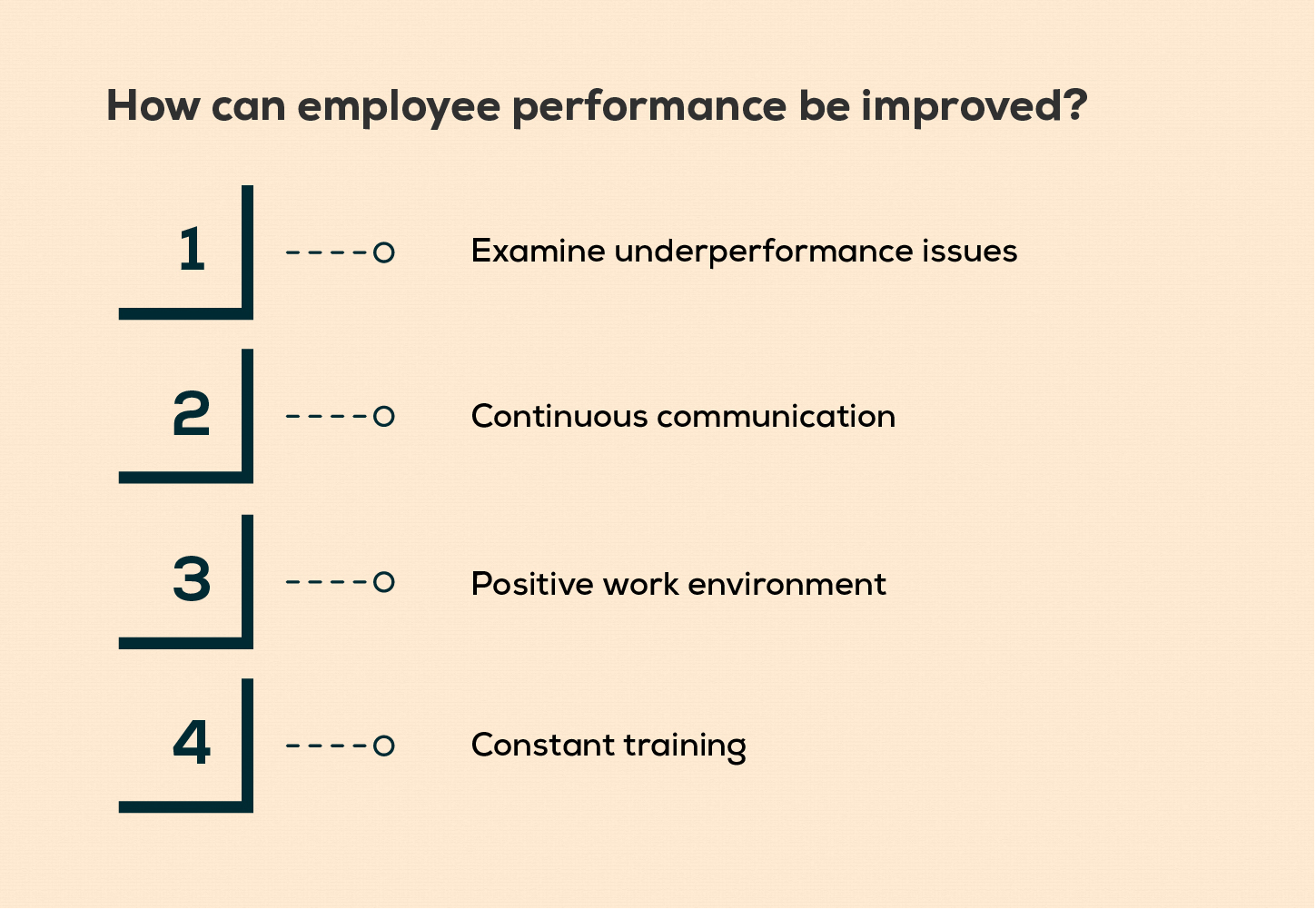
1. Examine Underperformance Issues
It is important to analyse the reason for employees' underperformance issues. Seeking information and engaging the individual directly can avoid being prejudiced by assumptions. One of the inadequate outputs can be due to lack of resources or lack of training. Generally, without a clear understanding of the company, employees may feel disengaged or disconnected, ultimately leading to decreased motivation and productivity.
2. Continuous Communication
Effective communication plays an important role in enhancing employee productivity. While negative feedback may seem discouraging, it is crucial to encourage it as it fosters openness and facilitates effective communication among team members regarding deadlines, resources, and projects.
3. Positive work environment
Have you ever imagined a workplace where the atmosphere feels warm, filled with positivity and fulfilment? In a positive work environment, employees feel supported, valued, satisfied and motivated.
At Inspirisys, we foster a positive work environment that prioritizes the mental well-being of our employees. We believe that a healthy mind is essential for productivity, creativity, and overall happiness in the workplace. Here, we cultivate a culture of support, understanding, and empowerment, ensuring that every member of our team feels valued and respected.
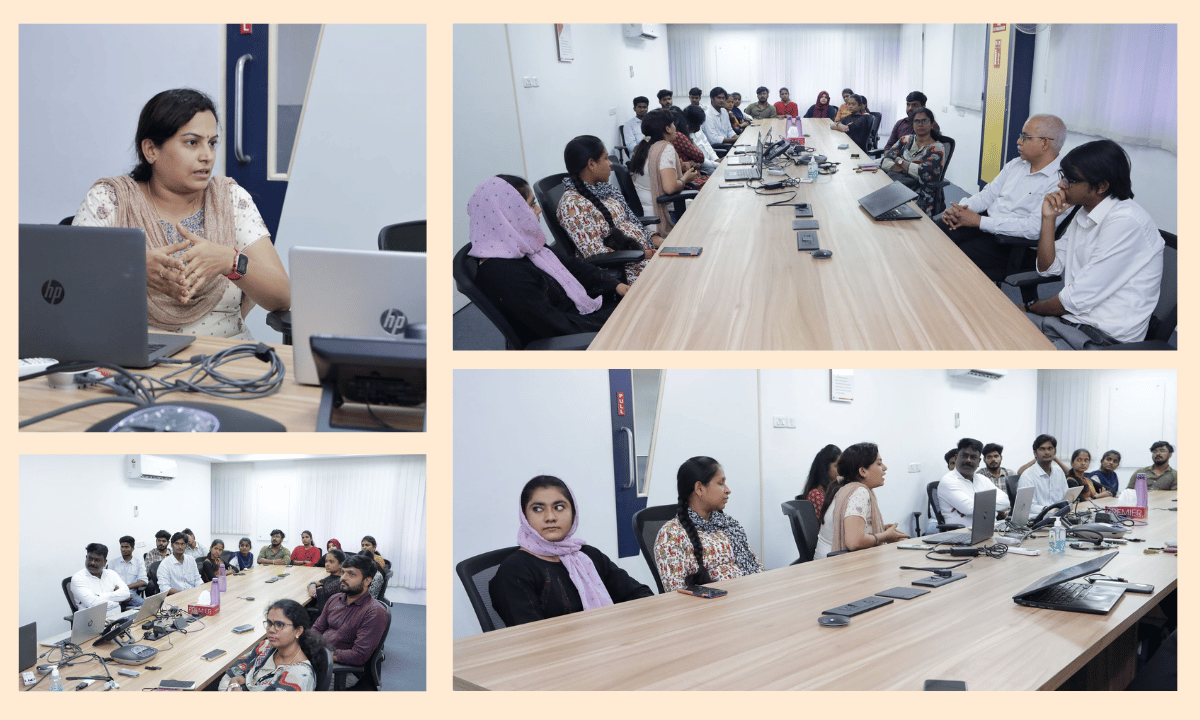
4. Constant Training
During the onboarding process, new employees receive significant attention and guidance. However, the training process should not end there. Continuous training is essential to further develop employees' skills and enhance their performance over time.
According to a survey conducted by Axonify, 92% of employees, believe that employee training programs that are well-planned have a favourable impact on their level of engagement.
What are the Benefits of a Performance Management System?
Curious about the advantages of a performance management system could bring to your company? Below listed are the top benefits that could bring organisational success.
- Improved performance
- Enhanced employee engagement
- Professional development
- Identifying low performers
- Increases employee retention
- Creates a more engaging work environment
Explore the intricate dynamics of Employee Disengagement and its profound impact on Workplace Productivity.
Conclusion
Employee performance stands as a cornerstone for any successful organization. It encompasses personal growth, ongoing learning, and skill acquisition, motivating employees to tackle challenges and embrace new opportunities. Equipped with diverse strategies to enhance performance, employees are empowered to navigate this journey of innovation effectively. Implementing these methods not only unlocks numerous opportunities but also fuels organizational growth, fostering a work environment that values the unique contributions of each individual.



